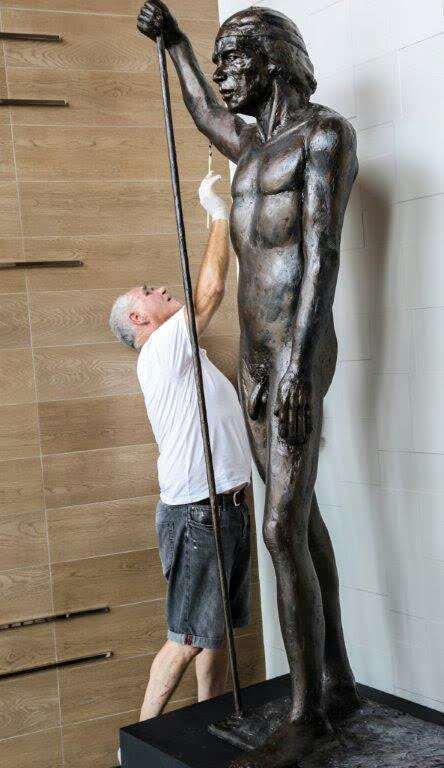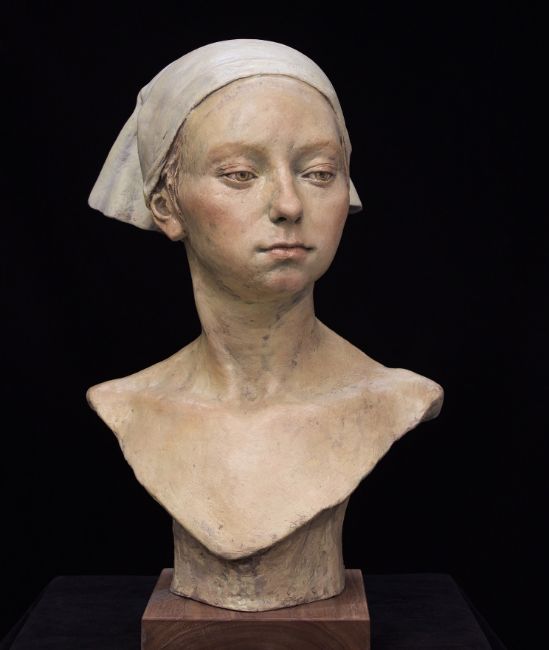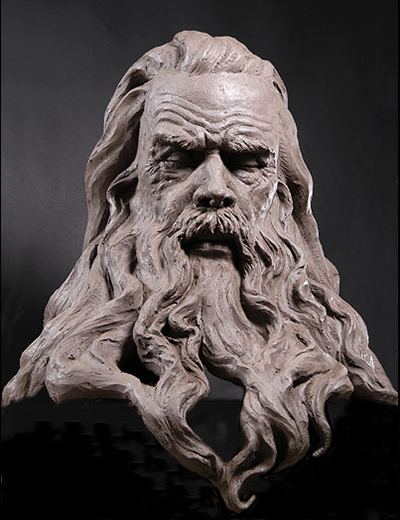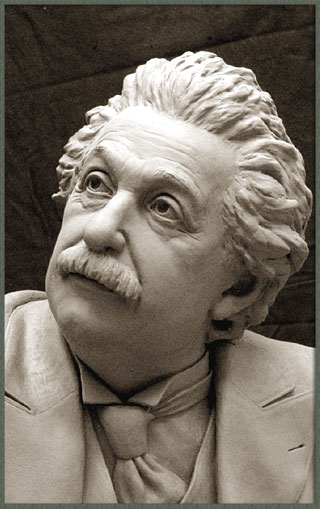The Evolution of Sculptures: From Ancient to Modern
The Evolution of Sculptures: From Old to Modern. Robert C Hitchcock Sculptor.
Sculpture, one of the oldest forms of art, has actually been an indispensable component of human people for millennia. From the old worlds of Egypt and Greece to the modern-day period, sculptures have evolved, mirroring adjustments in artistic techniques, materials, and social impacts. This journey through time traces the development of sculptures, discovering the changes in vogue, subject matter, and artistic expression.
Beginning with the ancient world, sculptures crafted from stone and later bronze captured the essence of deities, rulers, and everyday life. The Renaissance duration witnessed a revival of timeless sculpting methods, as artists sought to emulate the graceful types of ancient Greek and Roman sculptures (Portrait Sculptor). In the modern era, artists challenged typical limits, accepting abstraction and experimentation with brand-new products
This expedition will look into the varied development of sculptures, revealing the abundant tapestry of imaginative expression throughout different periods and cultures.

Ancient Sculptures: From Rock to Bronze
Ancient sculptures transitioned from being sculpted out of rock to being cast in bronze. This change noted a significant development in the art of sculpture, permitting for better improvement and detail in the completed jobs. Stone sculptures, while remarkable in their own right, were limited by the nature of the material. Rock required substantial shaping and sculpting, commonly leading to an extra streamlined representation of the subject.
The intro of bronze as a medium for sculptures produced a transformation in artistic expression. Bronze supplied artists the chance to create natural and detailed kinds that were not possible with rock. The process of casting bronze permitted the creation of numerous copies of a sculpture, making it possible for larger circulation and preservation of these artistic work of arts.
The transition from rock to bronze likewise saw a shift in the topic of sculptures. While stone sculptures mainly illustrated gods, goddesses, and mythological numbers, bronze sculptures started to mirror a more comprehensive series of subjects, including daily individuals and animals. This growth of subject issue showcased the convenience and flexibility of the bronze medium.
Renaissance Rebirth: Shaping in the Timeless Design
The Renaissance resurgence of sculpture saw a resurgence in the timeless design, structure upon the advancements made throughout the change from stone to bronze in ancient sculptures. During this period, musicians sought to recreate the classic visual and ideals of appeal that were prevalent in ancient Greek and Roman sculptures.
Among the vital features of the Renaissance revival was the focus on naturalism and the human kind. Sculptors like Donatello and Michelangelo strove to catch the anatomical details and expressions of their topics with unmatched accuracy. They studied the human body and incorporated their monitorings into their sculptures, causing realistic and realistic representations.
An additional important aspect of the Renaissance revival was the expedition of perspective and depth. Artists used techniques such as contrapposto, where the weight of the body is moved away, creating a sense of motion and dynamism. They additionally experimented with different materials, consisting of marble and bronze, to achieve a degree of elegance and ins and out in their sculptures.

Modernism and the Avant-Garde: Damaging Standard Borders
Throughout the Modernism and Avant-Garde activities, sculptors pressed the borders of standard imaginative conventions. This period, which arised in the late 19th and very early 20th centuries, saw a significant shift in the means artists came close to sculpture. Denying the concept of art as mere replica, modernist artists sought to explore brand-new types, materials, and principles.
One of the crucial characteristics of modernist sculpture was the emphasis on abstraction. Carvers relocated far from realistic depictions and rather concentrated on capturing the essence of the subject through streamlined types and geometric shapes. This departure from traditional depiction allowed artists to reveal their feelings and concepts in an extra personal and subjective manner.

Contemporary Sculptures: Discovering New Materials and Concepts
With an emphasis on exploring brand-new products and ideas, modern sculptures have changed the field of art. Artists today are pressing the boundaries of typical sculpture by utilizing cutting-edge materials and experimenting with abstract ideas. These sculptures test standard concepts of type, significance, and materiality, inviting audiences to participate in a thought-provoking and new imaginative experience.
Contemporary sculptors are embracing a wide variety of materials, consisting of plastic, glass, steel, and even natural matter. go to this site They are not limited to the traditional medium of rock or clay, enabling higher civil liberty and experimentation. This change in the direction of unconventional products has actually opened up brand-new opportunities for musicians to develop sculptures that are vibrant, interactive, and visually striking.
Along with exploring new products, modern sculptures likewise look into complex and abstract principles. Artists are now discovering themes such as identification, social concerns, and the atmosphere, making use of sculpture as an effective tool for social commentary and introspection. These sculptures test customers to assume critically and engage with art on a much deeper level, stimulating conversations and provoking psychological feedbacks.
International Impacts: Sculptural Customs From Worldwide
Sculptural customs from different areas of the world have dramatically formed the development of sculptures throughout history. The international impacts on sculpture have been diverse and have actually contributed to the splendor and selection of creative expressions. From the ancient worlds of Egypt, Greece, and Rome to the elaborate makings of Oriental cultures, each area has established its unique sculptural practices that have affected artists throughout time.
In ancient Egypt, sculptures were produced largely for funerary and spiritual objectives. The renowned sculptures of gods and pharaohs, such as the Great Sphinx and the breast of Queen Nefertiti, showcase the Egyptians' proficiency of stone sculpting and their belief in the afterlife.

In ancient Rome, sculpture offered both creative and political purposes. Roman sculptures often shown emperors, generals, and mythical figures, showing the power and splendour of the empire. The marble statuary of Augustus of Prima Porta and the huge Arch of Constantine are notable instances of Roman sculptural success.
Oriental sculptural traditions, particularly in India, China, and Japan, have additionally had an extensive influence on the advancement of sculptures. Japanese sculptures, affected by Buddhism, stress simpleness and peace, seen in the calm statuaries of Buddha and the elegant art of bonsai.
The global influences on sculpture continue to progress in the modern-day period. Musicians today attract ideas from different sculptural traditions, incorporating brand-new products, strategies, and ideas to develop cutting-edge and provocative art work. The combination of various cultural impacts has actually generated a varied and dynamic sculptural landscape, reflecting the interconnectedness of our global culture. As we want to the future, it is certain that the worldwide influences on sculpture will certainly proceed to form and redefine this ancient art kind.
Verdict
Finally, the development of sculptures has actually seen a change from ancient stone and bronze functions to the classic revival throughout the Renaissance. This was complied with by the breaking of conventional borders with modernism and the progressive motion. Today, contemporary sculptures discover brand-new materials and concepts, while additionally drawing inspiration from global sculptural traditions. The trip of sculptures reflects the ever-changing imaginative expressions and social influences throughout history.
From the old human beings of Egypt and Greece to the modern age, sculptures have actually progressed, reflecting modifications in artistic strategies, materials, and cultural influences.Starting with the old globe, sculptures crafted from rock and later bronze captured the essence of deities, rulers, and daily life.Old sculptures transitioned from being sculpted out of rock to being cast in bronze. While stone sculptures primarily illustrated gods, goddesses, and mythical numbers, bronze sculptures started to mirror a wider variety of subjects, including daily individuals and animals.In conclusion, the development of sculptures has seen a shift from ancient stone and bronze works to the classical revival during the Renaissance.